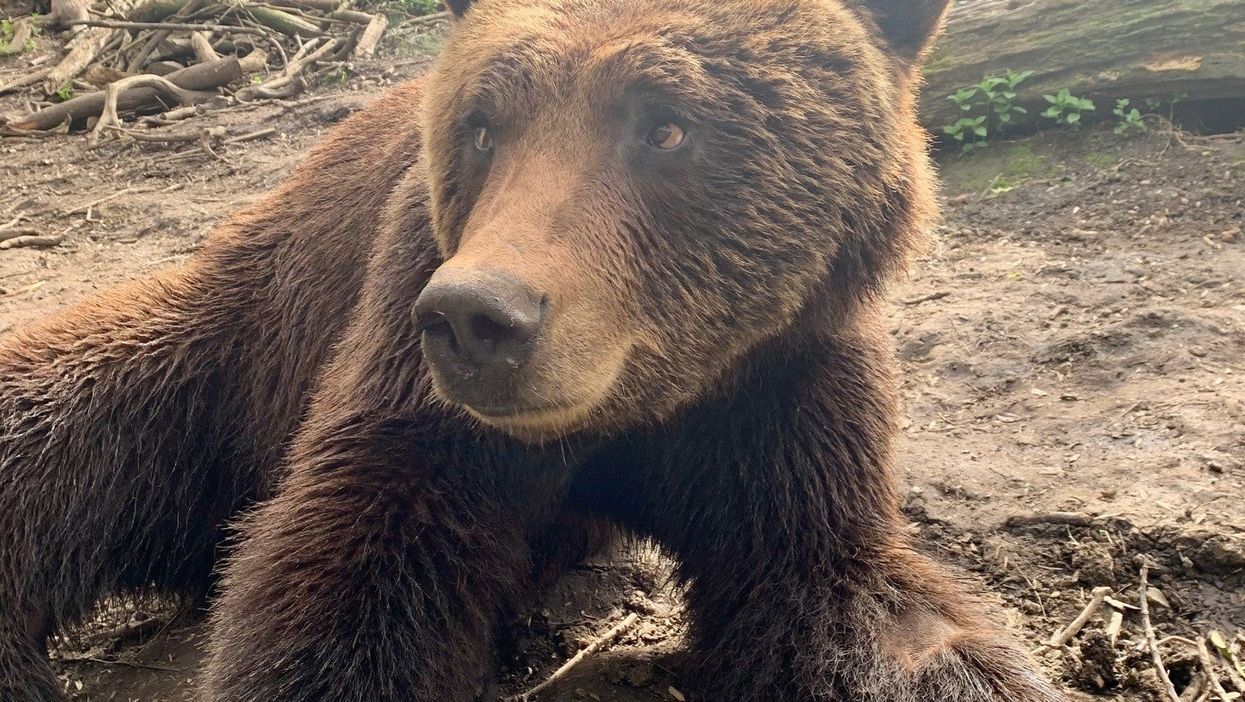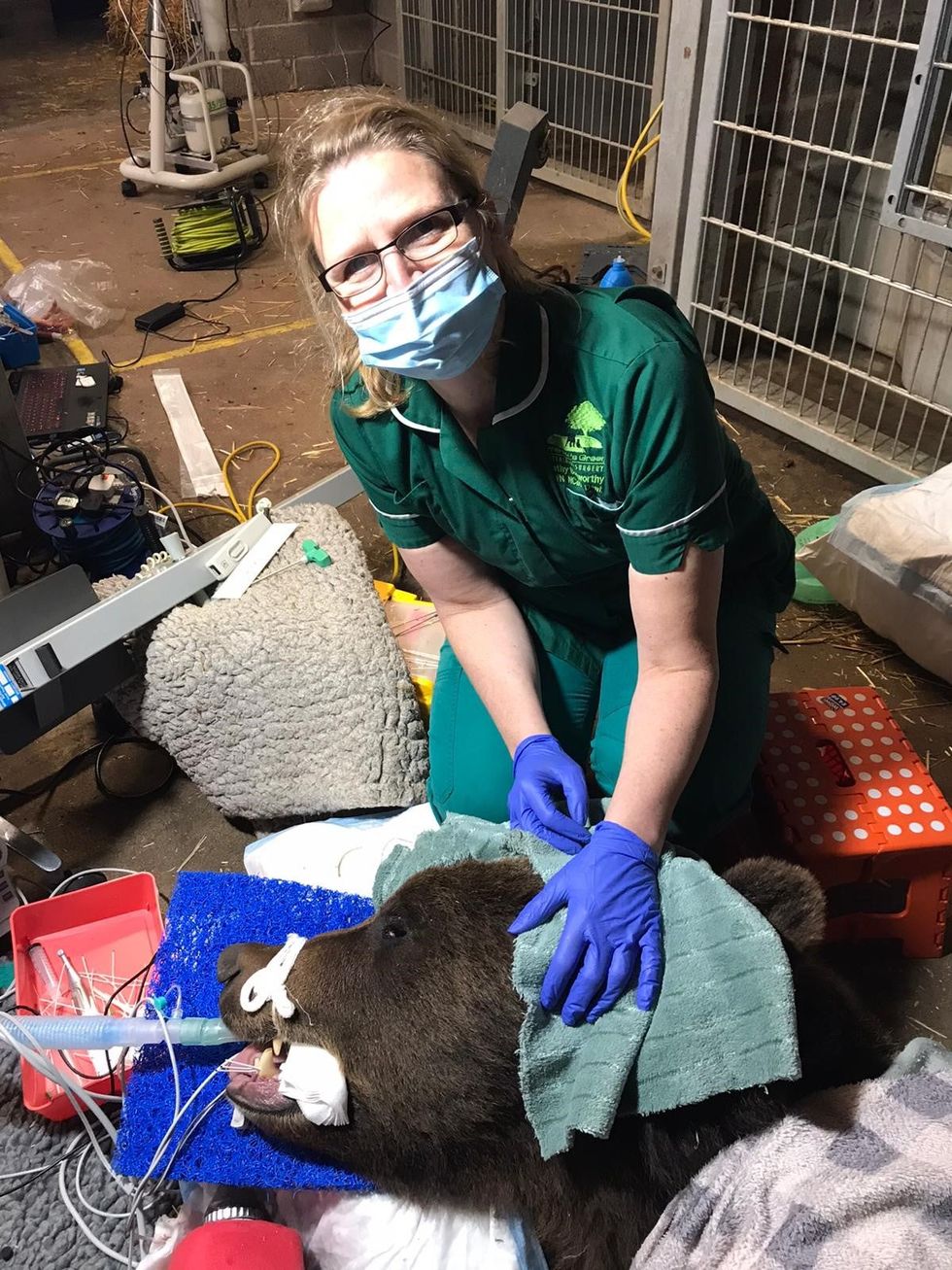
A brown bear with toothache has had a visit from the dentist.
Neo a four-year-old European brown bear, underwent a root canal procedure at the Wild Place Project, near Bristol to treat an abscess at the base of one of his canine teeth.
His keepers noticed the problem soon after Neo, and fellow bears Albie, Nilas and Gemini, became active following seven weeks of torpor – a slightly lighter form of hibernation.
The operation was performed by veterinary dentist Martin Brice, along with Wild Place Project’s vets Michelle Barrows and Charlotte Day.
Mr Brice said: “I’m used to treating much smaller, domestic patients at my clinic in Bristol and it’s always a pleasure to be asked to help out with dental procedures on zoo animals.
“Neo’s root canal surgery was essential to treat the infection that caused the abscess.
“It is possible that he might require further treatment in around six months as he’s quite a young bear and his teeth may not yet be fully mature.”
Neo was under general anaesthetic for around three hours, which also allowed zoo vets to carry out a full health check following torpor.
Ms Barrows, head of veterinary services and conservation medicine at Bristol Zoological Society, said: “We regularly carry out visual checks on our animals, however a general anaesthetic provides the perfect opportunity to get up close to our larger and more dangerous species and carry out diagnostic tests as well as physically assess their condition.
“As expected, Neo had lost some weight following torpor but is still in good body condition. His other results came back all clear and he has made a quick recovery following his dental work.
“We’re very grateful to Martin for providing his expertise and allowing Neo to benefit from the root canal treatment.”
Eurasian brown bears are classed as of Least Concern on the IUCN Red List of Threatened species, however local populations in the wild are becoming increasingly scarce.
Wild populations still exist in northern Europe and in Russia, including a small but growing population in the Pyrenees, the Cantabrian Mountains in Spain the Abruzzo in South Tyrol and Trentino regions of Italy.
The species became extinct in Britain around 1,000AD, due to over-hunting.














